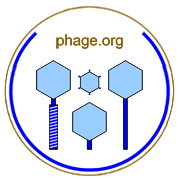

Temperate phage that has genetically lost its ability to lysogenize.
A virulent mutant is unable to display lysogenic cycles but still able to display productive cycles. Usually these mutations affect repressor binding ability, either production of active repressor protein itself or repressor binding to its DNA target. The result, minimally, is a loss of ability to produce plaques that are turbid when such cloudiness otherwise would result from the display of lysogeny in a subset of infected bacteria.
Genes in which vir mutations occur, in phage lambda, include particularly cI as well as cII and cIII.
The result of vir mutations can be distinguished phenotypically, that is, other than with regard to loss of ability to display lysogenic infections. Of specific interest, that is, is the ability not just of a temperate phage mutant to consistently productively infect but also the ability to productively infect homoimmune bacterial lysogens. Such phages also can be described as intemperate.
Ecologically, this distinction is important in terms of the survival of homoimmune lysogens, which are safe from lytic infection by vir mutants unless phages lose their ability to be impacted by the resident prophage’s repressor. With phage lambda this loss requires two independent mutations, i.e., in two separate operator sequences. Due to the rarity of double mutants, prophages can remain relatively safe from being exploited by their own mutant descendants.
See also the concept of phage virulence, which with phages is a broader concept than that of "virulent" as used here.
For more on this topic, see Wikipedia, Google, and PubMed. Contact web master. Return to terms.